Spathiphyllum: description and birthplace of the plant
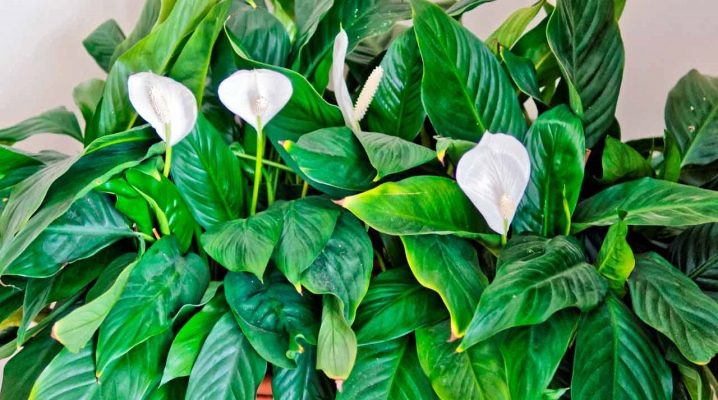
One of the main favorites of many flower growers is the beautiful and delicate spathiphyllum flower. It is distinguished by the elegance of inflorescences with a snow-white petal and emerald green leaves. The origin from distant hot countries did not prevent the flower from adapting perfectly to new conditions, so its cultivation does not cause much trouble for lovers of indoor plants.
Peculiarities
The name spathiphyllum, or in another way spathiphyllum, comes from the Greek words spathe - veil and phyllon - leaf. The flower is popularly known as the "white sail" and "female happiness". This is due to the non-standard type of plant, it does not have a stem as such, and the foliage grows immediately from the ground in the form of a bunch. The inflorescence, which looks like an ear, is surrounded by a white blanket.
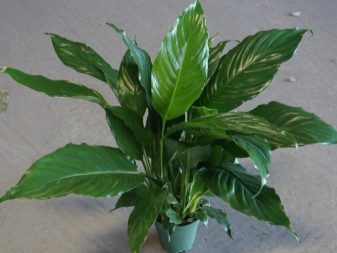
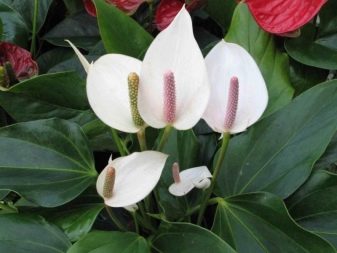
The flowering period occurs in the spring and lasts from a week to several months. However, at home, you can admire it almost all year round, of course, with proper care. After the bush has faded, all dead parts must be removed.
Women endow the plant with magical properties. According to legends, it helps to find a second half, to establish relationships in the family and even to have a child.
Scientists have come to the conclusion that “female happiness” is able to cleanse the surrounding air from harmful substances, dust particles and enrich it with oxygen.
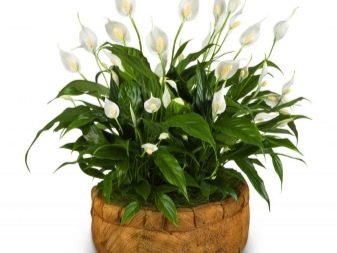
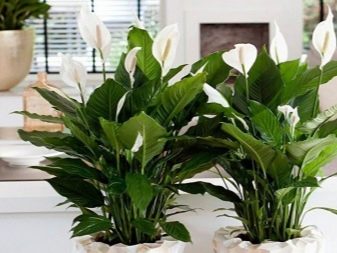
History of origin and homeland
The homeland of "female happiness" is Central and South America. The genus has more than 40 species, of which 3 came to us from the countries of East Asia and Polynesia.
The taxa are distributed over the Gulf of Mexico, Guiana, Suriname, Guatemala, El Salvador, Panama, Nicaragua, Venezuela, Colombia, Brazil and Peru. The main distinguishing feature of the countries where the bush comes from is a huge variety of flora and fauna. The soil under these conditions is represented by a litter of decaying leaves and branches, which is important to consider when breeding.
You can also meet the "white sail" in the Philippines, Sulawesi and the Solomon Islands. The plant was first discovered in the Colombian and Ecuadorian jungles and described by the German explorer G. Wallis (later one of the species was named after him). Breeders, in pursuit of new varieties, began to import the flower to England, from where it spread throughout Europe, as well as Russia.
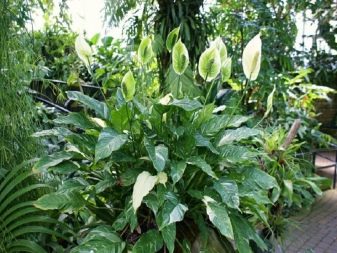
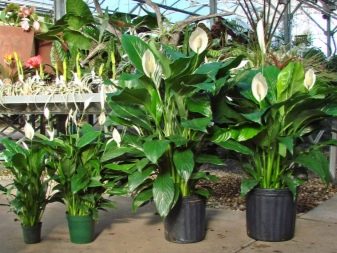
Where does it grow in nature?
Spathiphyllum grows in swampy forests, on the banks of rivers and streams, that is, in places where a stable climate with high humidity is maintained throughout the year. In these areas, there are no sharp fluctuations in temperature (usually 23-29 ° C), seasons and seasons are not pronounced. At night, the air does not cool down, maintaining a mark of 18 ° C.
Under natural conditions, spathiphyllum occupies the lower tier of the tropical forest, therefore, despite the abundance of the sun, it is content with minor glare. As an adaptation, he grew leaves with a large diameter and length to increase the area of photosynthesis and capture of sunlight. Some representatives have adapted to the epiphytic existence, developing on tree trunks.
The soil of the tropics is characterized by a lack of nutrients. It mainly contains aluminum and iron oxides and has an acidic reaction.The humus layer is poorly developed, since all plant residues are either quickly taken up by large rhizomes of powerful plants, or are washed out by tropical showers. This led to the horizontal growth of the roots of spathiphyllum, which tend to the upper layers of the soil in order to capture nutrients in the proper measure. This fact must be taken into account when placing a bush in the garden and compiling a substrate for it.

The habitat of the spathiphyllum is in constant abundant moisture. Rainfall in these places is a common occurrence, and in its absence, a high humidity regime is still maintained.
And if at home the bush develops poorly or does not grow at all, you should pay attention to whether it has enough water. This is a common problem and one of the important conditions for the life of the "white sail".
Conditions for keeping at home
Despite its exotic origin, this houseplant does not impose any special expensive requirements on the grower. The only and important point of keeping a flower is to create comfortable microclimatic conditions and maintain them in optimal balance.

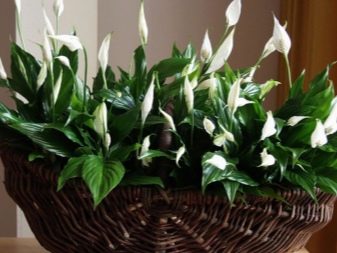
Air temperature
"Women's happiness" refers to heat-loving plants. During spring and summer, the air temperature should be kept at around 22-25 ° C, minimum 18 ° C. In the autumn-winter period, it is ideal for the life of the bush - 16-17 ° C. At this time, special vigilance must be exercised, since an excessively low temperature contributes to the development of rot, growth retardation and even death of the flower. "Sail" is sensitive to drafts, for example, on a cold windowsill or floor, it can fade and fade.
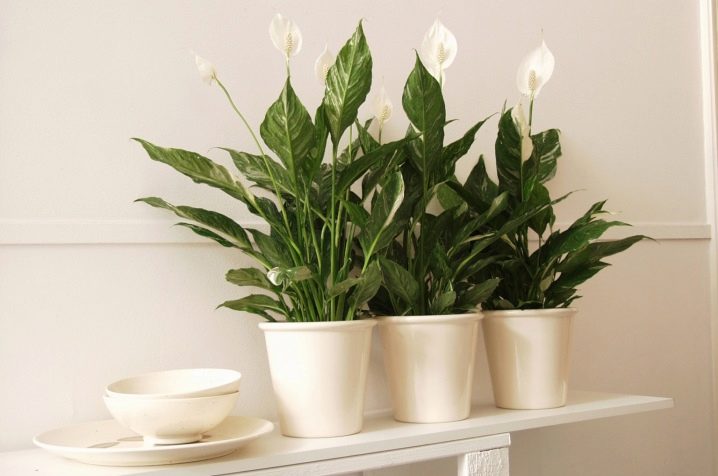
sunlight
Many believe that spathiphyllum is absolutely unpretentious to the amount of sunlight and grows well even in darkened rooms or, conversely, with bright direct rays. However, in practice, everything is not so simple. The pot should not be placed in direct sunlight, as ultraviolet light damages the shiny foliage, leaving burns. It is also not worth keeping the bush in the crown of the head, due to the lack of lighting, the leaves will begin to stretch out and acquire a dark green tint.
Optimally position the "sail" on the windows under diffused light. In this case, the plant will develop well, and the flowering period may slightly increase.
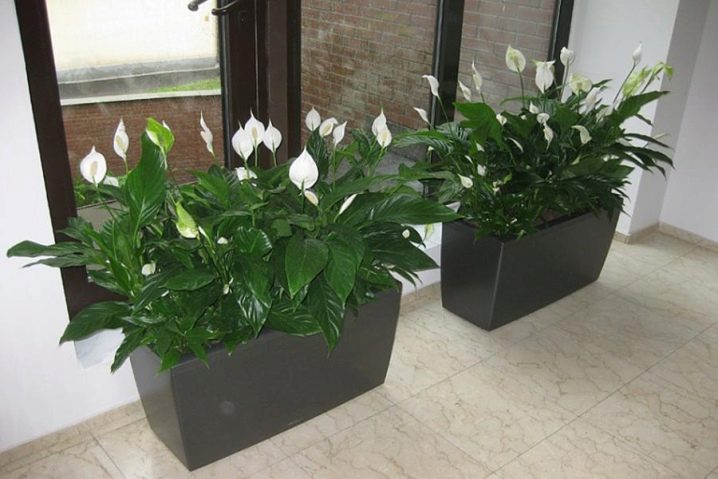
Air humidity
"Women's happiness" arrived in Russia from the tropics and therefore prefers high humidity. At home, the plant must be systematically sprayed (in the warm season, arrange a shower), pour expanded clay or moistened pebbles into the pallet, and set a pot on top. Even so, the tips of the leaves can dry out. During the flowering period, you need to carefully monitor where the water gets, it should not be on the inflorescence and "blanket".
Flowers can be an indicator of the "satisfaction" of a plant. With proper air humidity, they appear in the fall and persist until mid-winter.


Watering
It is advisable to water the flower only with settled water, with a temperature of about 20 ° C. In spring, summer and at the time of flowering, it is watered abundantly, guided by the ground (two days after the top layer of the substrate dries out). During the rest period, the amount of watering is reduced, but the soil should in no case dry out. However, if water stagnates (poor-quality soil, excess watering frequency or accumulation of liquid in the pan), it must be drained, otherwise the bush may die. Leaves are informative in this regard - with a lack of water, the crown droops, and with an excess it becomes covered with dark spots.
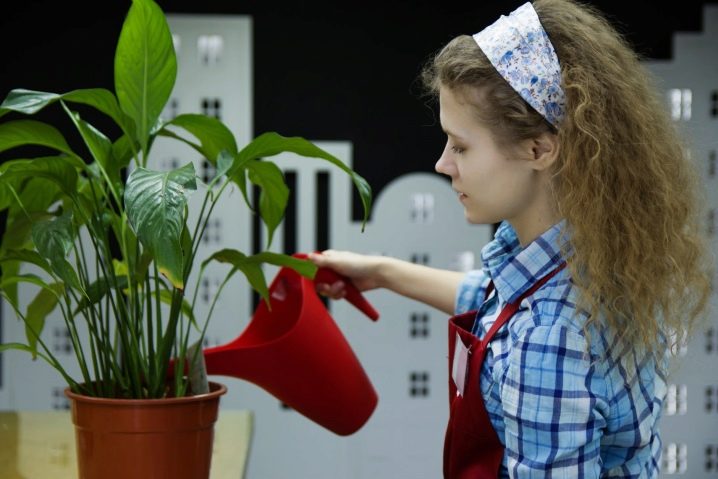
Fertilizer
Spathiphyllum needs year-round fertilization, without them a beautiful plant blooms poorly, and the flowers are small and inconspicuous. Top dressing should be carried out according to the following schedule:
- from mid-spring (when the flower is preparing for flowering and active growth) and until the second half of autumn, fertilizers are applied once every two weeks;
- during rest and sleep once a month is enough.
"Women's happiness" accepts organic fertilizers well. Top dressing of a mineral nature is diluted to a weakly concentrated solution and after application, and better before it, must provide abundant watering.



Transplant and reproduction
It is necessary to transplant the plant when its root system no longer fits in the old pot. Optimal in spring, when the bush has already moved away from wintering, but has not yet begun to prepare for flowering in full force. A flower bought in a store is transplanted a month after full adaptation. Before the procedure, prepare a substrate for which they take:
- humus;
- leafy ground;
- peat;
- sod land;
- sand.
The first three components are in equal parts, the last two are in double volume.
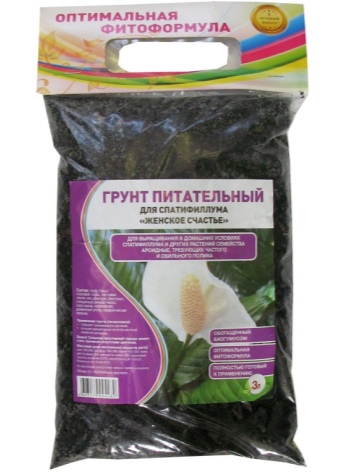
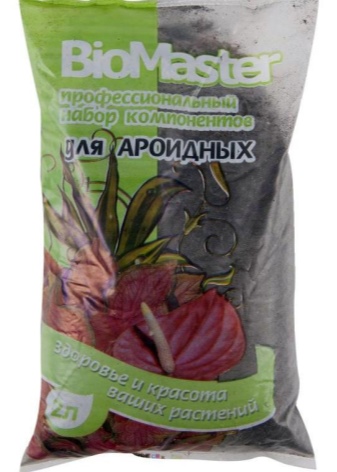
The new house should be 3-4 cm larger than the diameter of the rhizome. The step-by-step process of transplant is as follows.
- Spathiphyllum is poured abundantly with water and set aside for 60 minutes. This is necessary to soften the soil.
- After that, the bush is taken out of the old pot and the adhering substrate is carefully cleaned. At this time, the roots are carefully examined and the diseased and damaged ones are removed, the wounds can be sprinkled with ash.
- The bottom of the pot is covered with small pebbles, rubble or pieces of brick. The rest is filled with the prepared substrate.
- Set the bush in a pot, lay the rhizome and sprinkle it with earth.
- They hide the plant for a while in a darkened corner.
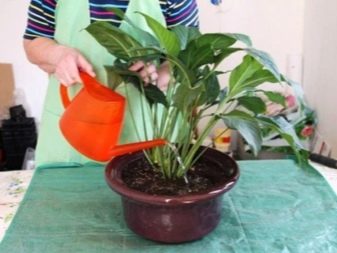
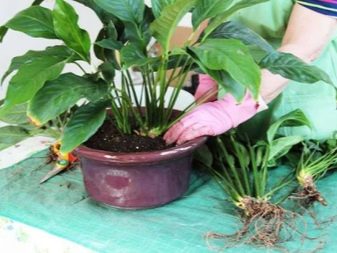
Flower propagation can be done in two ways:
- seminal, that is, germinate from a seed;
- vegetative - by division.
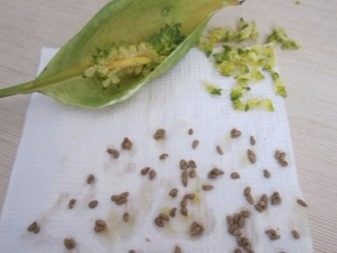

Germinating seeds and bringing a small sprout to an adult flower is a painstaking and complex process. Therefore, "female happiness" is usually divided. The peeled rhizome is cut with a sharp knife or sharpened scissors. It is important that each root has one growth point and 2-3 leaf blades. A young plant is planted in a pot with a diameter of 15 centimeters, in a specially prepared and moistened substrate. Six months later, a new adult "white sail" will start to delight the owners with its flowering.
You can find out tips for growing spathiphyllum in the next video.































The comment was sent successfully.